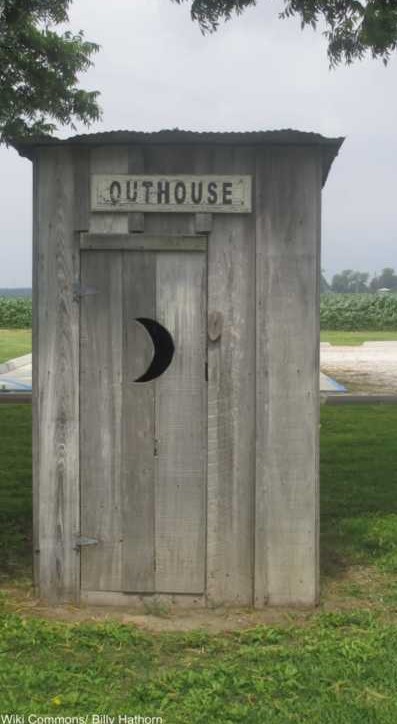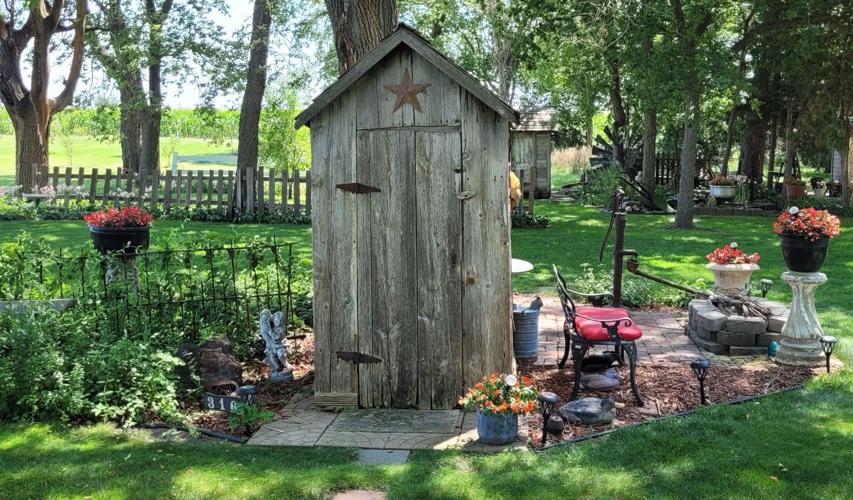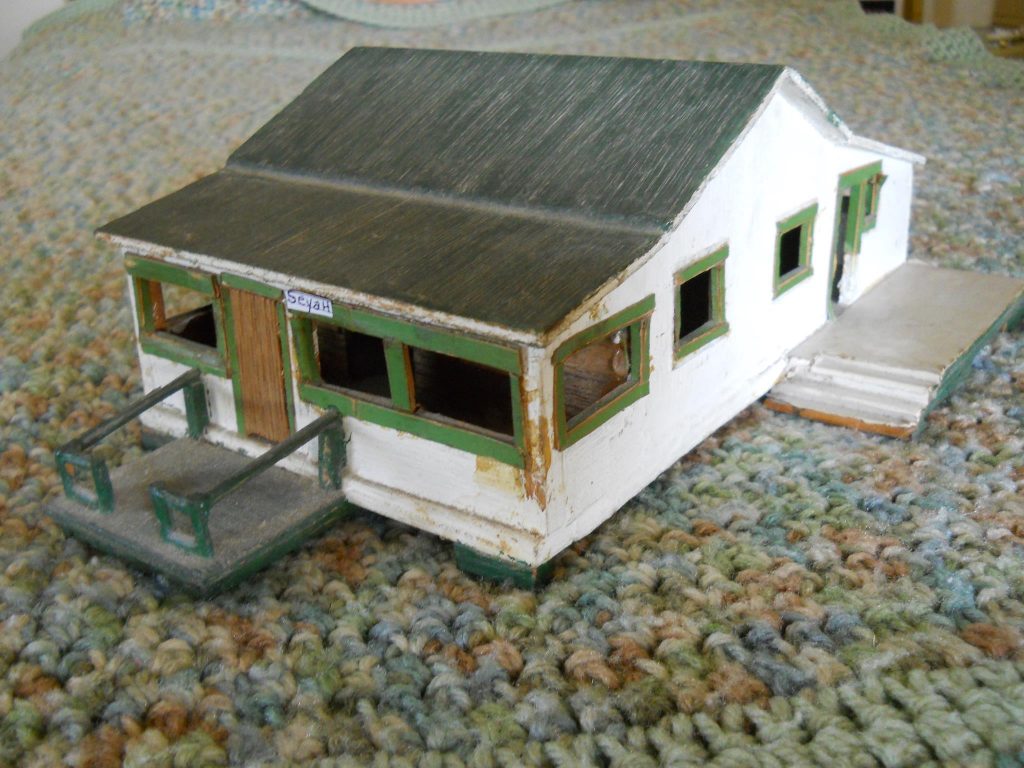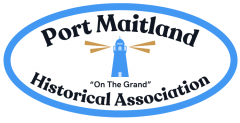Bill’s Post
November 2022
In an effort to clean up or rid my computer of unnecessary emails I have been spending time going through them. I found this one from the late Pat Hayes whose family cottaged at Beckley Beach i.e. Port Maitland east for years. I often got these types of messages from Pat. He knew I would understand most of what he wrote, but as you may not know him this may not be so easy for you. To that end I am going to add notes in italics as the message goes along. Keep in mind; I know it is disjointed but this is the type of emails one gets and sends when you do what I do!
Hi again, From Pat
Or of course you could put together a story on these subjects. Pat is suggesting a story for the Grand Dispatch.
Bill From Pat
Another subject for a story:
A backhouse, as it is called in Canada or outhouse generally in North America is commonly known as a privy, earth closet or in Australia as a dunny, is a small structure, separate from the main building, which covers a pit latrine or a dry toilet. Outside North America, the term “outhouse” refers not to a toilet but to outbuildings in a general sense. The structures are referred to by many other terms throughout the English-speaking world including dunny in Australia and bog in the United Kingdom. The terms kybo and biffy are unique to the Scouting movements. In Australia such toilets are referred to as long-drops. American Sign-Language for the deaf (ASL) uses the letter B, four fingers together and clenched by the thumb which is tapped under the lower-lip on the chin to connote “bathroom”.
In the early 50’s my Dad Frank Hayes had a larger two-seater built that my mother Lillian Miloch insisted it be designated “boys and girls (the girls had a toilet seat). According to Wikipedia, this was the reason for the moon on the backhouse door(s) which was a gender friendly designation for “men only” (Women had a sun) in Colonial times. I believe Pat or Wikipedia have this backwards.
Also see https://www.youtube.com/watch?v=tbKEJWaN5WQ
Or https://www.youtube.com/watch?v=J_HehTDrbdI
From another website: Our parents and grandparents had more experience with them than most of us do today, as many homes didn’t have modern bathrooms (or even electricity) until after World War II. Legend has it that outhouses back in colonial times, when many folks couldn’t read, would have been marked for gender by a star (or sun) for men and a moon for women.


In England, Elizabeth I dubbed her nephew Thomas Crapper “Sir” for inventing the water closet which adjoined the royal bedroom and served as a privy and bathing room. It led the way for the WC, (water closet) a term still used today.
I had previously asked Pat some information and timeline about the garage now cottage his parents built behind their cottage which was named SEYAH which is Hayes spelled backwards.
NOTE: “A large garage made to accommodate four or more automobiles was also completed a year earlier (This is a year earlier than the two-seater outhouse mentioned above) and later refurbished with a small kitchen and two bedrooms.”
Here’s the back-story:
We had two backhouses: the original and oldest one was moved from its location behind the Seyah cottage and placed behind the 4-car garage when it was converted into a habitable two bedroom space we rented to visitors from Toronto, Hamilton and Buffalo for a few years.
The garage remained a secondary consideration for quite a few years but was redesigned in the early fifties by a young couple from Hamilton who volunteered to add the two bedrooms and contain the kitchen area. My folks agreed to waive their rent of $30.00 in lieu of the labor and pay for the materials they purchased at the Dunnville lumber yard. Meanwhile, the couple managed by sleeping on cots and cooking on a portable grill! They stayed a whole month of August until it was livable in its new guise. After the updated “Cottage” was ready – Mom rented it to friends from around the area and from the states for years.
After my grandfather Michael died on Good Friday, 1939. Michael died suddenly in Atlanta GA on the way home from Florida, but lived in Hamilton and used the cottage every summer. The Seyah cottage (Lots 19-20) lay dormant for almost three years until the late spring of 1942.
After my brother Jerry was born in Columbus OH. My folks decided to move back to Buffalo to be nearer the cottage. The plan was for my Dad to apply for work at the Buffalo Courier-Express (He was already an ITU (International Typographic Union member) and was hired immediately. He rented a small bedroom in a rooming house near the newspaper while my mother, myself and baby Jerry continued from Buffalo after an overnight stay in a downtown hotel. In the morning, we three trekked onward riding the TH&B railway connection to Smithville just barely missing the only bus from there to Dunnville where we continued by taxi to Beckley Beach.
The cottage had survived three winters but had become infested with moths and field mice. I remember how difficult it was that summer being cut off from everything. Mom got used to buying our food from the venders from Dunnville. Bakery, produce and dairy trucks were a common visitor on a near daily basis all during WWII and there were extra grocery items to buy from Spray, McDonald and finally the Curtis stores. All three of these people at one time had a summer store in their cottage or home at Beckley Beach. It was a struggle but somehow we got through it.
My Dad never had a license to drive until years later. We were used to transit and railway travel and never gave it much thought. He got some of his friends to drive him down and stay every weekend returning to Buffalo every Sunday night. (When I was in high school, I followed his weekend travel sing the Greyhound bus (Buffalo to Dunnville – (Detroit) on #3 Hwy. I don’t know what he meant here? If he meant “sing” here is one example of a Greyhound Bus song. https://www.youtube.com/watch?v=h1JfLNimN5E I think he meant to write the word “using” not “sing” but it was fun finding a Greyhound Bus song.
It was not a leisurely sojourn; the men started with the hard stuff like mowing the lawn with scythes and rusted hand mowers, tackling the one acre property as best they could. All of us that first summer of revival went to the beach to bathe rather than to sun and swim around. After a few years, one of them suggested Dad get a driver’s permit and before long we had a used Chevrolet and we eased into a much easier routine.
More information about the outhouse than you ever wanted to know!
The end! Or almost the end!
The cottage SEYAH that Pat mentioned had not been used for a few years after his grandfather died was built 1905 for Lawrence Hamilton Gardner. Those of you who knew the Carroll (Carl) Kenney Family from Beckley Beach may remember that Grace Kenney (1900-1975) married Gibson Gardner the son of L. H. Gardner. This was one of only very few buildings that TH&B permitted to remain on the east side of the river after they purchased (1915) what was to become Beckley Beach.

I found an old note “Port Maitland, Lawrence. H. Gardner, wife Isabella and two children arrived on Friday evening and are getting settled in their cozy cottage next to J. Siddall’s residence. [Lots 19 & 21 at Beckley Beach, now owned by Fionia and Derick Chetwynd.]” This cottage was built by Douglas Lockhart of Stromness.
Now I am done!
